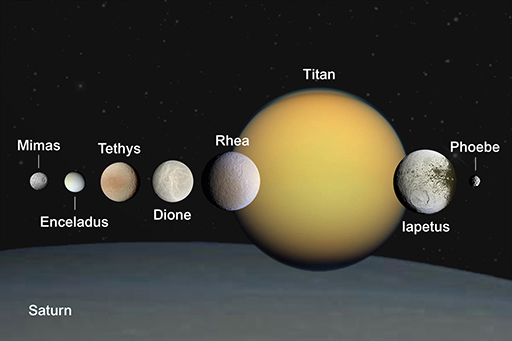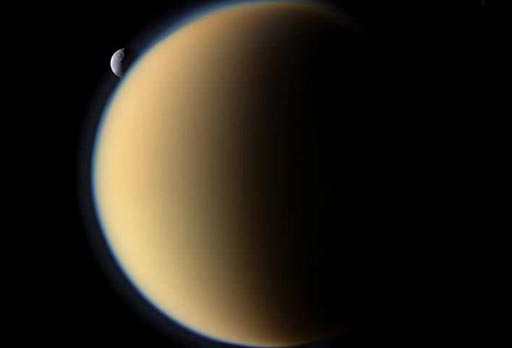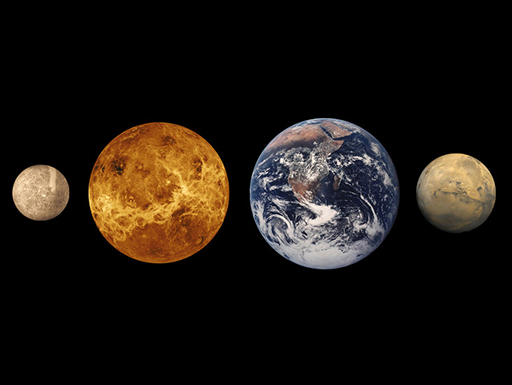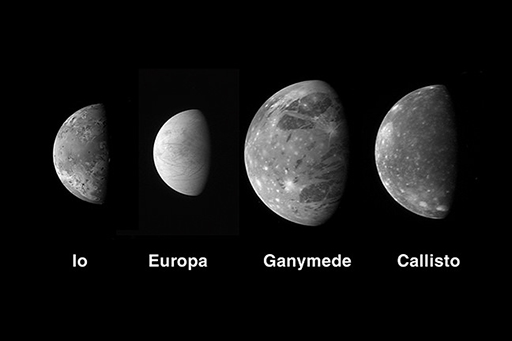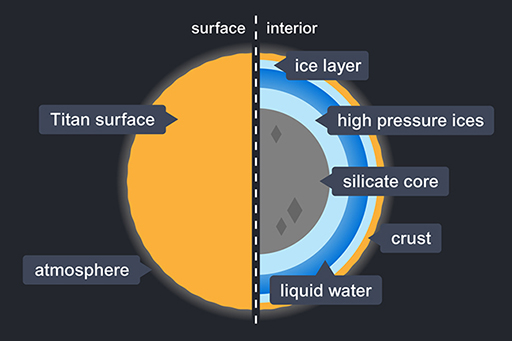2.1 Titan and its atmosphere
Titan is the only moon in the Solar System with a dense atmosphere. It is the largest of the 53 known moons of Saturn and the second-largest moon in the Solar System, after Jupiter’s moon Ganymede. It was discovered in 1655 by the Dutch scientist Christiaan Huygens. It has a surface temperature of −178 °C.
Titan has a dense atmosphere of which 97% is nitrogen. The rest is mostly methane, but solar ultraviolet radiation high in the atmosphere breaks down the methane into components that then combine to form progressively larger and more complex hydrocarbon molecules, beginning with ethane and ending up with microscopic specks of tar. These organic compounds form orange smog that hides the surface from view in visible light. The blue haze above the smoggy layer is probably composed of very tiny particles of hydrocarbons. In this view from the Cassini orbiter, the much smaller moon Mimas is visible in the background.
Regarding atmospheric pressure, Titan is more like Earth than either Mars or Venus. The atmospheric pressure at Titan’s surface is 1.5 times that on Earth. Earth’s atmospheric pressure is sometimes expressed as 1 bar or 1000 millibars. The latter unit is used on weather maps. For comparison, the pressure at the surface of Venus is nearly 100 bars, whereas the atmospheric pressure on Mars is about 0.01 bars.
So why does Titan have an atmosphere but the Galilean moons Ganymede and Callisto do not? Ganymede is bigger than Titan and Callisto is only slightly smaller, yet they have not retained any atmosphere at all. Jupiter is 5 astronomical units (5 AU) from the Sun, whereas Saturn is at 9.5 AU. It may be that Jupiter is too close to the Sun for its moons to retain an atmosphere, but that Saturn and Titan are far enough and therefore cold enough to do so.
Sunlight would destroy all methane in Titan’s atmosphere over tens of millions of years and from this, scientists infer that the methane on Titan must have been replenished many times since its formation. The volume of methane stored in surface lakes is too small a reservoir to replenish the atmosphere, so the most likely explanation is that methane trapped inside Titan since its formation is released to the surface episodically by cryovolcanic eruptions. The heating mechanism may have changed over time, but the result is the release of methane by melting of the methane-rich water-ice.

